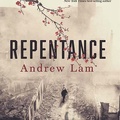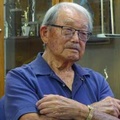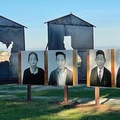SAN JOSE — It’s a brand new form of Japanese dance in the U.S. that its members describe as like a whirlpool, although it could also be likened to a colorful undulating cloud, accompanied by the sounds of flutes and drums.
It’s gaining in popularity in San Jose.
“We’re not very well known here in the states but we’re catching on,” said Uzumaru dance member Sarah Chan.
“There are five (Yosakoi) teams in the U.S., in San Jose, San Francisco, Kansas, New York and Colorado.”
A one-year-old dance ensemble, the “San Jose Uzumaru” performs dancing in the “Yosakoi” style, uniquely Japanese, a blending of both modern and traditional forms. It combines colorful costuming and intricate choreography.
Chan said the dancers seek to perform in sync as though one entity.
Though it does modern numbers the troupe’s performance seem to the observer to take them back in time to feudal Japan. Colorful costume robes made in Japan (red, blue, and white) adorn the performers and flag wavers harkening to the days of the samurai accompany the dancers.
The dancers hold wooden instruments called “naruko,” and use a variety of percussion instruments, drums, and props such as fans and umbrellas. The performers use their bodies to make musical poetic statements, often choreographing their own unique dance numbers.
Yosakoi is a traditional Japanese dance that originated from Kochi prefecture in Japan, an area on Japan’s Shikoku Island south of Tokyo known for its rural forests, mountains, rivers, and Pacific Ocean beaches.
“In Japan Yosakoi is very popular,” Chan said. “They have huge festivals every year.”
Consisting of local folk songs and original pieces, dances are performed by large teams with members of all ages both men and women, and including children.
“We have about 30 members of San Jose Uzumaru,” Chan said.
Members of the troupe come from different backgrounds and are of varying ages. Some are immigrants from Japan, but all must be physically fit to do the coordinated dance routines necessary for a performance. “It’s a good workout and a good form of exercise,” Chan said.
Chan said the team was originally an aerobics workout group and developed into a performance routine.
Chan, 28, grew up in the San Francisco Bay Area and attended UC Berkeley studying molecular cell biology. Today she is a scientist working on cancer research.
“I love dancing and it’s been a hobby for me,” Chan said. “A college friend introduced me to it and I really enjoy it.
There’s a lot of comradery.” Leader of the San Jose Uzumaru is Ikumi Sekiguchi. She moved to the U.S. in July of 2017 having been a member of the Yakudou (means throb in Japanese) Yosakoi team in Japan for more than 10 years. She founded San Jose Uzumaru in December of that year.
Uzumaru translated from Japanese means a whirlpool and a circle.
Sekiguchi said after discovering her passion for Yosakoi dance, she wanted to share the joy of the performances with others.
“Yosakoi is one place where I can truly be myself,” she said. “For 12 years I danced and sang in Japan, but despite the fact I am living in a place far away from my friends, family and fans, I am enjoying my time here in the United States while being myself. And above all Yosakoi is a part of my life.”
Sekiguchi described the Uzumaru dance group as a “power spot.”
“It’s a place where one can become invigorated from the energy and strength you receive from the group meetings,” she said. “Everyone from Uzumaru has given me strength. My mind and body are happy and healthy and above all I’ve started to enrich my life. As the leader I have to keep working hard. Uzumaru is like a family that always supports me. I would like to spread this energy and strength to more people.”
Sekiguchi said she would like to see the San Jose ensemble perform in other countries.
“No one really knew what Yosakoi was when I founded Uzumaru in San Jose,” she said. “I want others to experience how fun it is and the kind of bonds you can form with others regardless of age or gender. After coming to America I feel it was fate for me to share Yosakoi with others. The name Uzumaru comes from our desire to draw those in the audience into the world of Yosakoi and to enjoy it with us.
It would make me happy if Uzumaru could become the bridge between America and Japan while helping others get a better understanding of Japanese culture,” Sekiguchi added.
Group member Nozomi Takahashi said she was originally an aerobics instructor who was drawn to the Yosakoi style of dance.
“Uzumaru consists of a lot of energetic, powerful and unique members and it’s a place where regardless of age or gender everyone is able to enjoy themselves to the fullest while dancing,” she said. “It’s wonderful to see everyone working towards a common goal and be able to be themselves while performing at various events. It’s meaningful teamwork.”
Member Hiroko Nanbara agreed the Yosakoi experience has been a joy.
“You can experience Japanese culture through music and dance,” she said. “It’s a dance everyone even if they’re from a different culture can enjoy. The audience being so close to the dancers, the dancers can feel the audience reactions and it feels as if the performance is a live concert; as a performer that makes it so rewarding.”
The group performs at San Francisco’s annual Cherry Blossom Festival and recently performed at the San Francisco Bon Odori (Obon) Street Festival on July 27 and the city’s Nihonmachi Street Fair on Aug. 4. The group has also performed to the accompaniment of San Jose’s popular Chidori Band.
Practices take place on Sundays 2 to 4 p.m. at the Akiyama Wellness Center in San Jose at 110 Jackson St. Chan said people are welcome to watch.
“We also encourage people who are interested to join our group,” she said.
Performances by San Jose Uzumaru may be viewed on Youtube and the group also has sites on Facebook and Instagram.
Upcoming performances of San Jose Uzumaru include Japanese Heritage Night at the San Jose Giants baseball game on Aug. 18, the “Moon Viewing Event” to be held Sept. 19 at Hakone Gardens at 21000 Big Basin Way in Saratoga and the Osaka Festival held in San Francisco’s Japantown on Sept. 28.
Information on the San Jose Uzumaru can be found on Facebook or Google the name on the Internet.
* This article was originally published on Nikkei West on August 24, 2019.
© 2019 John Sammon / Nikkei West






